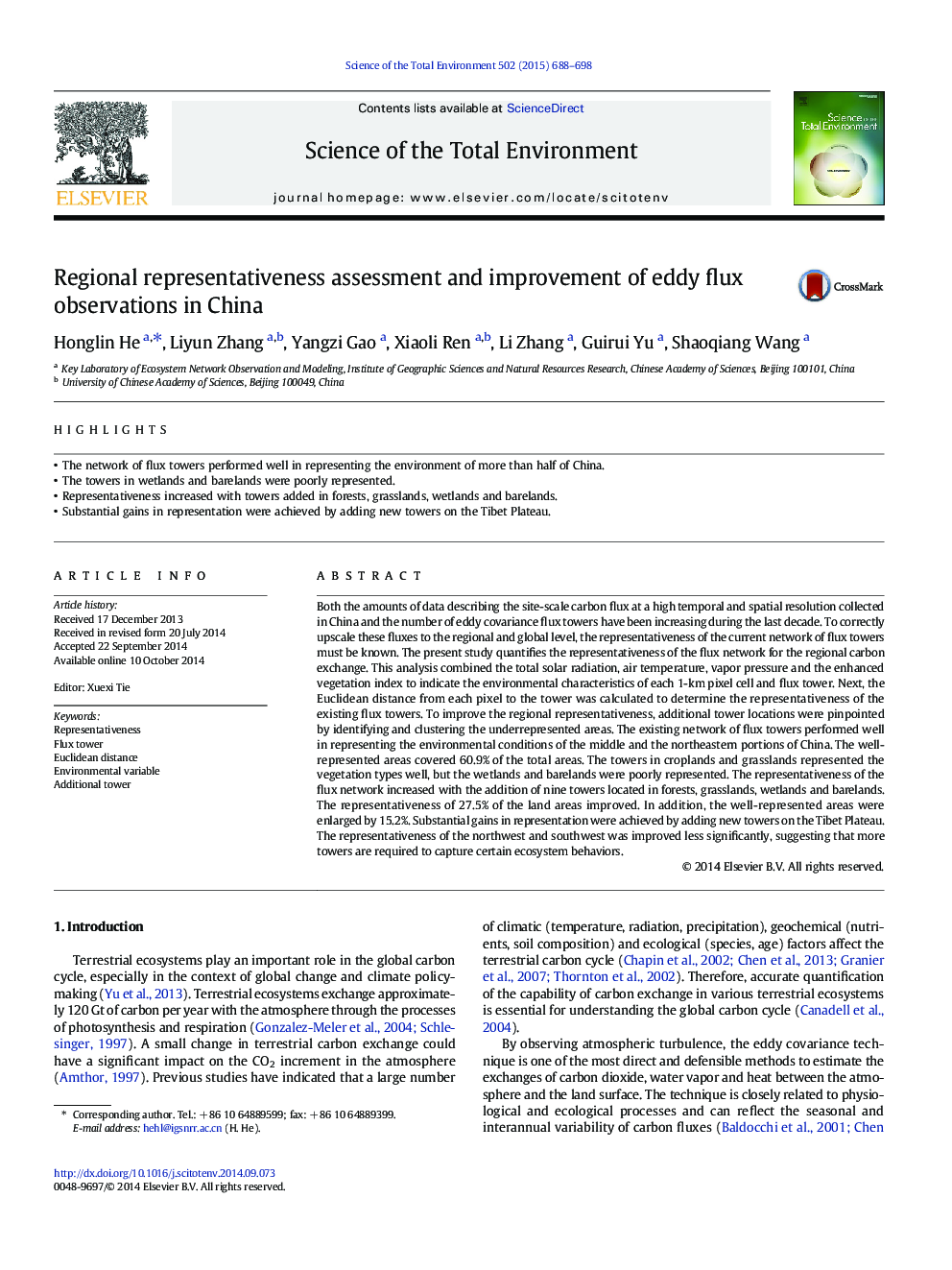| Article ID | Journal | Published Year | Pages | File Type |
|---|---|---|---|---|
| 6328586 | Science of The Total Environment | 2015 | 11 Pages |
Abstract
Both the amounts of data describing the site-scale carbon flux at a high temporal and spatial resolution collected in China and the number of eddy covariance flux towers have been increasing during the last decade. To correctly upscale these fluxes to the regional and global level, the representativeness of the current network of flux towers must be known. The present study quantifies the representativeness of the flux network for the regional carbon exchange. This analysis combined the total solar radiation, air temperature, vapor pressure and the enhanced vegetation index to indicate the environmental characteristics of each 1-km pixel cell and flux tower. Next, the Euclidean distance from each pixel to the tower was calculated to determine the representativeness of the existing flux towers. To improve the regional representativeness, additional tower locations were pinpointed by identifying and clustering the underrepresented areas. The existing network of flux towers performed well in representing the environmental conditions of the middle and the northeastern portions of China. The well-represented areas covered 60.9% of the total areas. The towers in croplands and grasslands represented the vegetation types well, but the wetlands and barelands were poorly represented. The representativeness of the flux network increased with the addition of nine towers located in forests, grasslands, wetlands and barelands. The representativeness of 27.5% of the land areas improved. In addition, the well-represented areas were enlarged by 15.2%. Substantial gains in representation were achieved by adding new towers on the Tibet Plateau. The representativeness of the northwest and southwest was improved less significantly, suggesting that more towers are required to capture certain ecosystem behaviors.
Related Topics
Life Sciences
Environmental Science
Environmental Chemistry
Authors
Honglin He, Liyun Zhang, Yangzi Gao, Xiaoli Ren, Li Zhang, Guirui Yu, Shaoqiang Wang,
